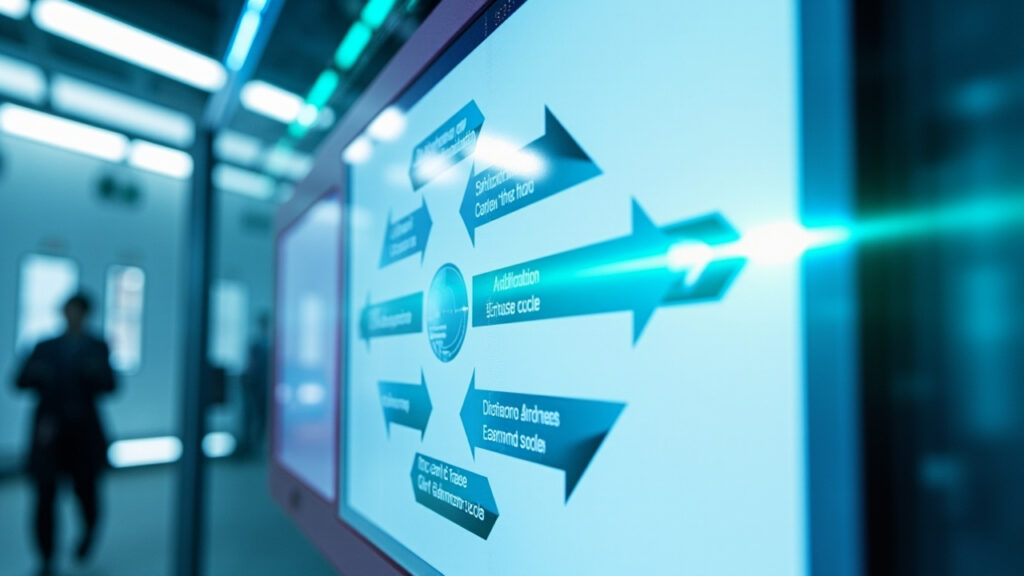In the realm of software development, testing stands as a crucial phase, one that ensures the reliability and performance of applications across various platforms and devices. As technology evolves and software becomes increasingly complex, the traditional methods of testing are being pushed to their limits. Developers and quality assurance (QA) teams face significant challenges, including maintaining high quality under tight deadlines and adapting to ever-changing environments.
This expansive blog post delves into the transformative impact of artificial intelligence (AI) on software testing. We will explore how AI is reshaping testing strategies, enhancing efficiency, and ensuring higher software quality. By integrating advanced AI-driven tools like GenQE, organizations can address common pain points in software testing, such as repetitive tasks and the need for rapid adaptation to new technologies. Through detailed insights and practical advice, this article aims to equip software professionals with the knowledge to leverage AI effectively in their testing processes.
The Evolution of Software Testing

Software testing has undergone significant transformations over the decades. Initially, testing was a manual, cumbersome process that often resulted in delays and overlooked defects. As software development methodologies evolved, so did testing approaches, ushering in the era of automation and continuous integration.
The Shift from Manual to Automated Testing
In the early days, manual testing was the norm. Testers would manually execute test cases without the help of tools, which was time-consuming and prone to human error. The advent of automated testing tools revolutionized this process, allowing tests to be performed faster and more reliably.
Automated testing tools, such as Selenium and QTP, provided frameworks for testers to write test scripts that could be executed automatically, without direct human intervention. This not only sped up the testing process but also improved its accuracy by eliminating human errors associated with manual testing.
Integration with Development Processes
The integration of testing with development processes, particularly through DevOps and agile methodologies, marked another significant evolution. This integration aims to enhance communication and collaboration between developers and testers, thereby increasing efficiency and reducing the time to market.
Agile methodologies emphasize continuous delivery and integration, where testing is conducted at every stage of the development process. This ensures that any defects are identified and addressed early, reducing the overall cost and effort of fixing bugs in later stages.
The Role of Continuous Testing
Continuous testing involves automated tests being run as part of the software delivery pipeline to obtain immediate feedback on the business risks associated with a software release candidate. This is crucial for continuous delivery and deployment practices.
By embedding testing directly into the continuous integration/continuous deployment (CI/CD) pipeline, teams can ensure that every change made to the codebase is tested automatically, ensuring that the software can be reliably released at any time.
The Impact of AI on Software Testing

AI is set to transform software testing fundamentally, making it more efficient and effective. By harnessing the power of AI, developers and testers can automate complex tasks, predict potential problems, and refine their testing processes.
Enhanced Test Case Generation
AI can analyze vast amounts of data to generate test cases that cover unexpected edge cases, leading to more robust software. This capability significantly reduces the manual effort involved in creating test cases and ensures comprehensive test coverage.
For instance, AI algorithms can parse through requirements documents, user stories, and even code to identify potential test scenarios automatically. This not only speeds up the test creation process but also helps in achieving higher test coverage by identifying edge cases that human testers might miss.
Predictive Analytics in Testing
AI-driven predictive analytics can forecast potential defects and identify risky areas in the software before they become problematic. This proactive approach allows teams to focus their efforts more strategically and prevent issues from escalating.
Predictive models can analyze historical data from past testing cycles and use machine learning algorithms to predict which areas of the software are most likely to contain defects. This helps in prioritizing testing efforts towards these high-risk areas, improving the efficiency of the testing process.
Real-time Problem Solving
AI enhances real-time decision-making in testing environments. It can dynamically adjust testing strategies based on real-time data, optimizing the testing process and reducing the overall testing time.
For example, if an AI tool detects that a particular module of the software is causing frequent failures during testing, it can automatically allocate more resources to test that module more thoroughly or suggest modifications to the testing strategy to address these issues.
Challenges in Modern Software Testing

Despite advancements, several challenges persist in the field of software testing. These challenges can hinder the efficiency and effectiveness of testing processes, thereby affecting the overall quality of software products.
Handling Increasing Complexity
Modern software applications are more complex than ever, integrating various technologies and operating across multiple platforms and devices. This complexity makes testing a daunting task as testers must ensure compatibility and performance across different environments.
Software such as multi-tiered applications that involve databases, APIs, and client-server interactions can introduce numerous variables and potential points of failure. Effective testing of such complex systems requires robust strategies and tools that can simulate and test diverse scenarios and interactions.
Keeping Pace with Rapid Development Cycles
In today’s fast-paced technological landscape, organizations strive to shorten development cycles to stay competitive. This puts immense pressure on testing teams to perform faster and more efficiently without compromising quality.
The need for speed can often lead to rushed testing phases, which may not cover all aspects of the software thoroughly. This can result in defects slipping through to production, which can be costly and damaging to the company’s reputation.
Scaling Testing with Development
As organizations grow, scaling testing processes to keep up with increased development activity becomes essential. However, scaling effectively without increasing costs or resources is a challenge for many.
Scaling testing involves not just increasing the number of tests but also managing larger teams of testers, more complex test environments, and higher volumes of test data. Effective scaling requires automation, good management practices, and tools that can facilitate these aspects.
Introducing GenQE: An AI-Powered Solution

In response to these challenges, tools like GenQE are revolutionizing the approach to software testing. GenQE leverages AI to enhance test automation and improve overall software quality, addressing many of the pain points in traditional testing methods.
AI-Driven Test Generation
GenQE automates the creation of test cases using AI, which analyzes software requirements and user behavior to produce effective and comprehensive test scenarios. This not only speeds up the testing process but also enhances the coverage and accuracy of tests.
GenQE’s AI-driven approach to test case generation ensures that even the most complex and nuanced scenarios are covered, reducing the likelihood of defects going undetected. It also adapts to changes in software requirements, continuously updating and refining test scenarios to align with the latest changes.
Smart Test Execution
By prioritizing test cases based on risk and potential impact, GenQE ensures that critical issues are addressed early in the testing cycle. This smart execution helps teams optimize their testing efforts and focus resources where they are most needed.
This intelligent prioritization helps in efficiently allocating testing resources, which is particularly beneficial in environments where time and resources are limited. It ensures that the most critical parts of the application are thoroughly tested, thereby reducing the risk of critical defects.
Self-Healing Automation
GenQE’s self-healing capabilities are a game-changer for maintaining test environments. When a test script fails due to changes in the UI, GenQE can automatically adjust the script, reducing the need for manual intervention and maintaining the continuity of testing processes.
The self-healing technology in GenQE detects changes in the application’s user interface and dynamically updates test scripts to adapt to these changes. This significantly reduces the maintenance burden on the testing team and increases the resilience of the testing process.
Best Practices for Implementing AI in Software Testing

To effectively leverage AI in software testing, organizations should adopt certain best practices. These practices ensure that AI tools are used efficiently and that teams can achieve the best possible outcomes.
Start with a Clear Strategy
Before integrating AI into testing processes, it’s crucial to have a clear understanding of the goals and objectives. This includes identifying the areas where AI can have the most significant impact and setting realistic expectations for what it can achieve.
A strategic approach involves assessing the current testing processes, identifying bottlenecks, and determining how AI can be best utilized to overcome these challenges. It also involves planning for the integration of AI tools with existing systems and processes.
Focus on Data Quality
AI-driven testing is heavily reliant on data. Ensuring that the data used for training AI models is of high quality and relevant is essential for the success of AI implementations in testing.
Data used in AI-driven testing should be comprehensive, accurately reflecting the various scenarios that the software will encounter in production. It should also be cleaned and preprocessed to ensure that the AI models are trained on high-quality data, free from anomalies that could skew the results.
Continuous Learning and Adaptation
AI systems are not set-and-forget solutions. They require continuous training and refinement as software applications and environments evolve. Teams must be prepared to invest in ongoing learning and adaptation of AI tools.
Continuous learning involves regularly updating the AI models with new data from recent software releases and testing cycles. This helps the AI adapt to changes in the software and continuously improve its accuracy and effectiveness in testing.
Conclusion: Embracing the Future of Software Testing

The integration of AI into software testing is transforming the landscape, enabling faster, more effective, and more efficient testing processes. As software complexity increases and development cycles accelerate, AI tools like GenQE offer a viable solution to meet these challenges head-on.
By adopting AI-driven testing strategies and tools, organizations can enhance their testing capabilities, reduce costs, and improve the quality of their software products. As we look to the future, the role of AI in software testing will only grow, making it an essential component of modern software development practices.
For those looking to stay ahead in the field of software testing, exploring AI-powered tools like GenQE could be the next step in enhancing your testing processes and ensuring the success of your software projects.
Discover More Innovative Solutions
Want to learn more about the tools and technologies discussed in this article? Explore how these innovations can be tailored to your specific needs and workflow requirements.
Our team of experts is available to answer your questions and provide personalized insights into how modern solutions like GenQE can address your specific challenges.